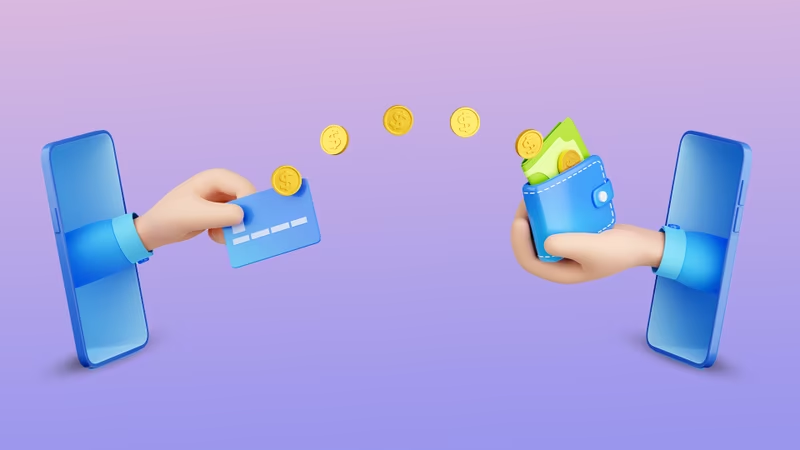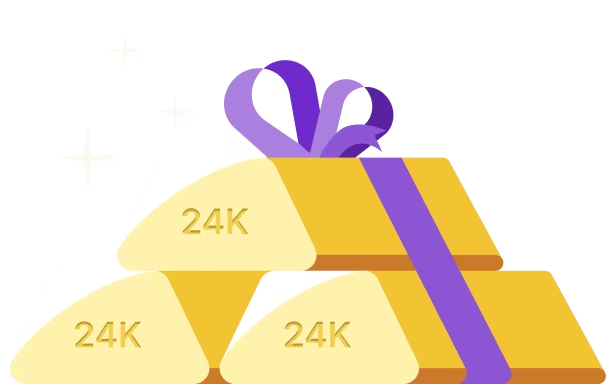Instant loans are quick financial solutions designed to provide immediate access to funds during emergencies or for planned expenses.
You can obtain these loans through various sources, including traditional banks, non-banking financial companies (NBFCs), and digital lending apps like the Jar App. Each platform offers a different application and approval process.
To learn more about the instant loan process, go through this blog, and depending on your needs, choose a platform that aligns with your preference.
Instant Loan Working Process
Here is a step-by-step procedure explaining the workings of an instant loan process:
Stage 1: Loan Discoverability and Customer Acquisition
To attract customers, fintech companies rely on various marketing methods such as SMS, emails, online banners, social media ads, and search engine strategies.
Your loan search depends on your specific needs and preferences, directing you to channels offering the most suitable options. Once you are onboard, you move on to the loan origination stage.
Stage 2: Loan Origination
When you apply for a loan through a digital lending app or platform, the eligibility criteria and your creditworthiness are evaluated based on the information you share.
The decision on loan approval is supported by Technical Service Providers (TSPs) and Loan Origination Systems (LOS).
TSPs operate in the background to streamline certain aspects of the loan process. It assists with services such as E-KYC, generating insights and enabling E-signatures.
LOS are provided by companies to automate the loan origination journey. These systems handle everything from pre-qualification to credit assessment, ensuring the entire process is efficient and seamless for both you and the lender.
Pre Qualification: Assessing the Eligibility of the Borrower
The lender evaluates instant loan eligibility by gathering basic personal details and conducting a soft credit check, sufficient to determine initial qualification.
The loan origination system (LOS) automates this evaluation by applying predefined business rules.
These rules consist of specific criteria, such as a minimum credit score requirement, which help lenders make informed decisions. If the borrower meets the eligibility criteria, they can proceed to submit the loan application.
Loan Application: Verifying Identity and Data Sharing
To confirm your authenticity, a fraud check is done through the KYC (Know Your Customer) process, which may involve video KYC, E-KYC, or Aadhaar-based KYC.
With E-KYC, you will provide your identification details and upload necessary documents directly through the loan app.
Video KYC requires you to use your device's camera and microphone for real-time document verification.
For Aadhaar-based KYC, you can either manually upload your Aadhaar details or retrieve them from digital storage platforms, with identity verification done through an Aadhaar-linked OTP.
Once you complete the KYC process, you provide consent to share your financial information.
The system facilitates this data sharing through integrations with entities like credit information agencies and financial data aggregators.
Credit agencies evaluate your loan and credit management to generate scores, but for those new to credit, key details like savings or utility payments may be overlooked.
Financial data aggregators offer a broader view by combining traditional and alternative financial data.
Underwriting: Analysing the Data to Assess the Repaying Capacity of the Borrower
After borrowers share their data, it undergoes analysis to assess their creditworthiness, known as underwriting.
This involves reviewing credit reports, payment histories, bank statements, and calculating the Fixed Obligations to Income Ratio (FOIR) to understand repayment capacity.
Alternative data, such as application speed or transaction patterns, may also be examined to identify potential risks.
The analysis results in a detailed borrower profile, highlighting financial health and creditworthiness.
Approval: Getting a Nod for the Loan
To validate the borrower's details, the app may review social media for employment verification or request references for social verification.
If approved, a loan offer with interest rates and repayment terms is provided. The borrower reviews the agreement, accepts the terms through an e-signature, and completes the loan origination process.
Stage 3: Loan Management and Monitoring
This stage starts with the disbursal of funds directly to the borrower's bank account, ensuring quick and seamless access to the loan amount.
After disbursal, loan management systems (LMS) integrated with the app's backend operations help automate and streamline the loan management process.
- Tracking Loans: The system consolidates loan details, including due dates, repayments, outstanding balances, interest calculations, and repayment performance. It also generates monthly statements, aiding in efficient risk management.
- Account Updates: It regularly updates borrower accounts, reflecting changes in contact details, payment history, or loan terms.
- Payment Reminders: Automated notifications remind borrowers of upcoming payments, promoting timely repayments.
- Loan Modifications: If borrowers face financial difficulties, the system evaluates and facilitates loan restructuring options.
- Customer Support: It equips customer service teams with tools to address borrower queries and effectively manage accounts.
Stage 4: Loan Repayment
In this stage, fintech companies face the challenge of combining automation with personal service to manage repayments and resolve borrower issues.
When your loan payment is due, you might be contacted by collection platforms that the app works with.
If you miss a payment, the lender will reach out to you to address the issue and may start foreclosure or repossession procedures if needed, often with help from collection platforms or debt recovery agencies.
The Bottom Line
The instant loan process provides a fast and efficient way to access funds when needed. From loan discovery to repayment, every step is streamlined through advanced technology and automation.
By simplifying eligibility checks, disbursing funds quickly, and managing repayments effectively, the process ensures convenience and reliability for borrowers.
Once you have done your due diligence, you can avail of an instant loan of up to ₹5 lakh with Jar!
Frequently Asked Questions
- Can I receive an instant loan right away?
There are multiple options available for obtaining an instant loan. You can still visit a bank to apply for a loan, but online loan applications now let you get approved and have the funds credited to your account within hours or even minutes.
- How is my KYC conducted in the instant loan process?
In the instant loan process, your KYC (Know Your Customer) is typically completed through digital methods. This may involve E-KYC, video KYC, or Aadhaar-based KYC.
- How is my creditworthiness assessed for an instant loan?
The system assesses your creditworthiness by reviewing your credit report, payment history, bank statements, and other financial data.
The process also evaluates your Fixed Obligations to Income Ratio (FOIR) to determine your repayment capacity.










